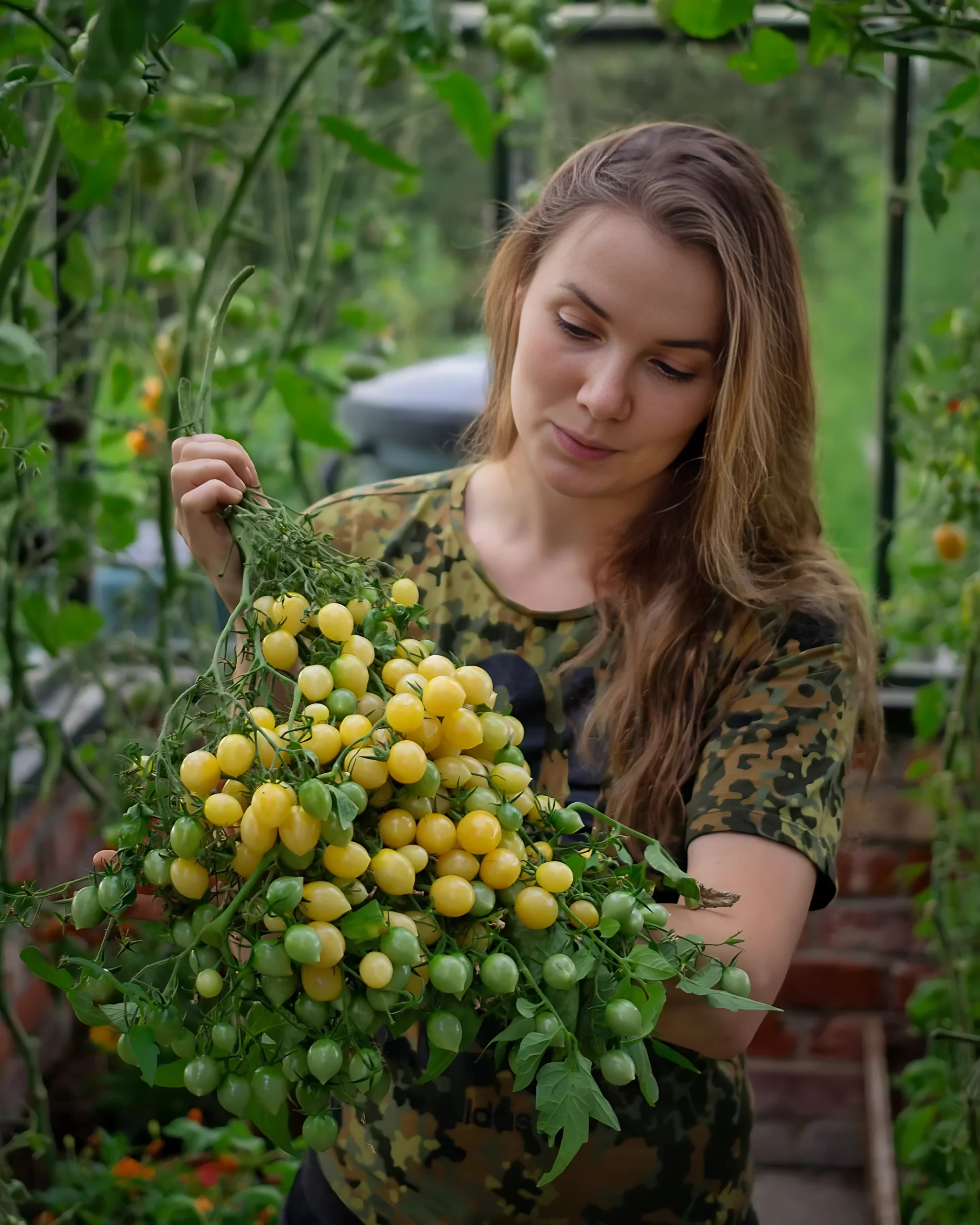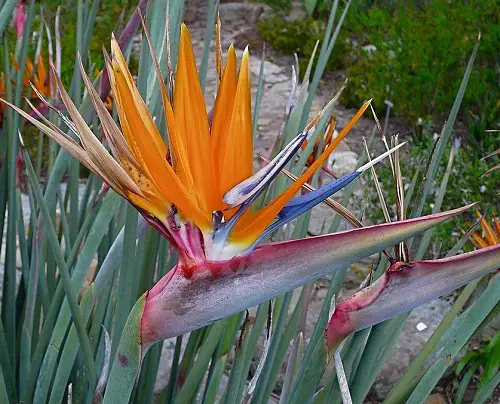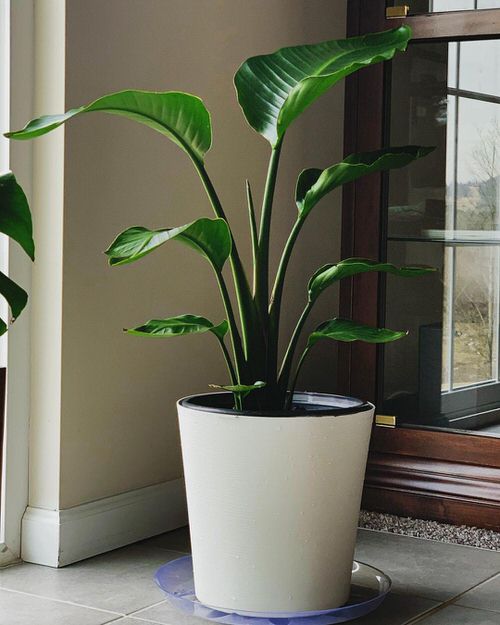Read about the Common Bird of Paradise Problems and Solutions to ensure optimal growth and vibrant foliage.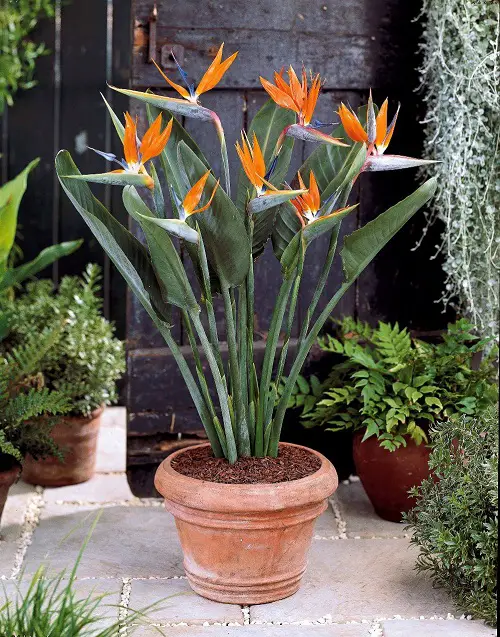
These Common Bird of Paradise Problems and Solutions will guide you into growing and maintaining a healthy specimen indoors and outdoors!
Common Bird of Paradise Problems and Solutions
1. Root Rot
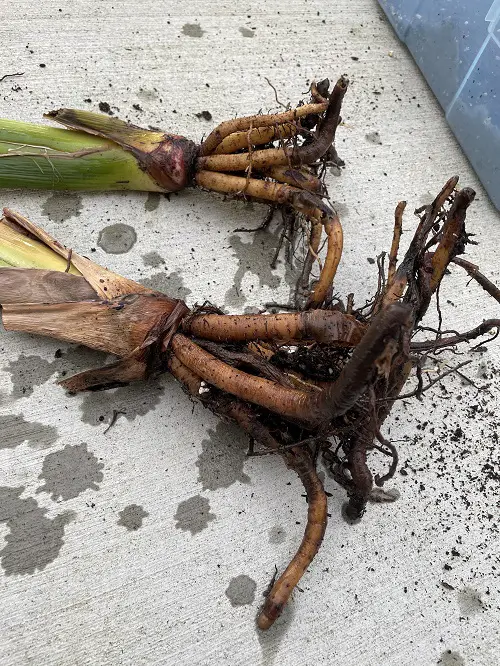
The primary cause of root rot in Bird of Paradise plants is excessive watering. When the soil becomes overly saturated, it restricts the roots’ ability to absorb oxygen.
It also weakens the roots, impairing their ability to take in water and essential nutrients. This susceptibility to fungi and bacterial attacks can lead to symptoms such as curled leaves, wilting, and, in severe cases, potential plant demise.
Solution: Trim the affected roots using sharp pruning shears to remove the rotten portions. Opt for a well-draining potting mix that facilitates proper drainage and aeration.
2. Curling Leaves
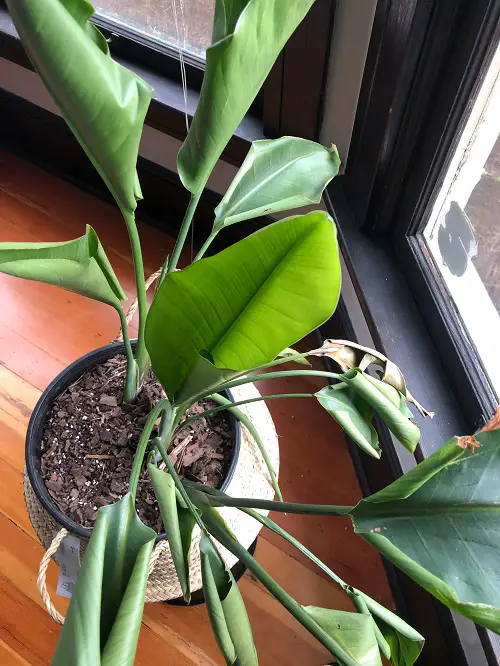
When the plant experiences water scarcity, the leaves naturally curl inward as a protective mechanism to reduce water loss through the leaf surface. This curling helps to minimize the leaf’s exposure to the surrounding environment.
It may also happen due to low humidity levels, exposure to excessive heat, and cold drafts.
Solution: Regular and sufficient watering is essential for the strelitzia plant. Additionally, if low humidity is a concern, use a humidifier to prevent leaf drooping.
3. Leaflessness
Water plays a crucial role in the production of flowers and leaves. Insufficient or excessive water can trigger this issue. It can also be caused by:
- Low humidity
- Shock from transplanting
- Old leaves
- Pests and diseases
- Light deprivation
Solution: To prevent both overwatering and underwatering, it is crucial to provide adequate water with proper drainage. Additionally, it is essential to supply the plant with the necessary nutrients and ensure it receives sufficient light.
4. Brown Edges / Tips
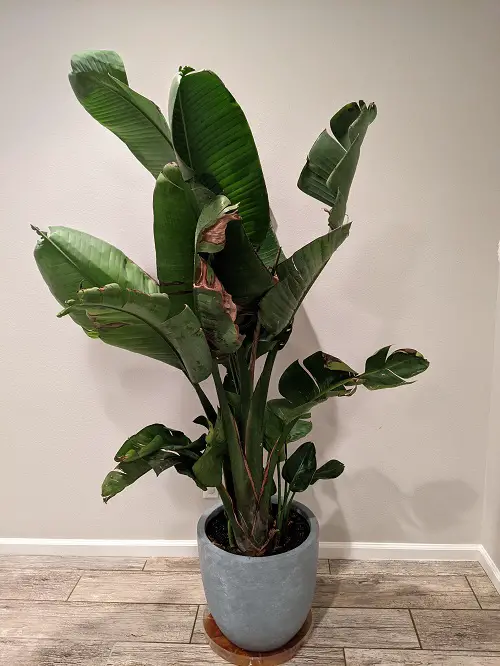
One common cause of brown edges on leaves is the presence of water containing chlorine or other salts. It can also be caused by over-fertilization.
Additionally, underwatering, low humidity levels, fungal infections, and insufficient light exposure are other factors that can contribute to the development of brown tips on the leaves.
Solution: To avoid the presence of chlorine or other salts, it is advisable to replace tap water with pure, filtered water. Use a humidifier and fertilize moderately.
5. Leaf Splitting
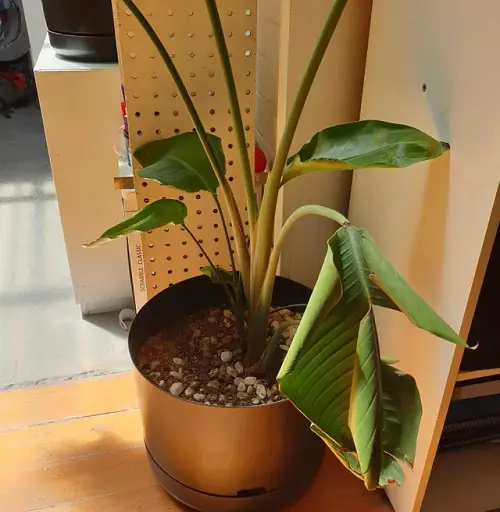
Various factors can contribute to leaf splitting in bird of paradise plants, including strong winds, low humidity, watering problems, or infections.
Solution: While leaf splitting is a normal issue, avoid it, protect the plant from strong winds, maintain optimal humidity levels, ensure proper watering practices, and promptly address any infections or damage that can save the plant from it.
6. Yellowing Leaves
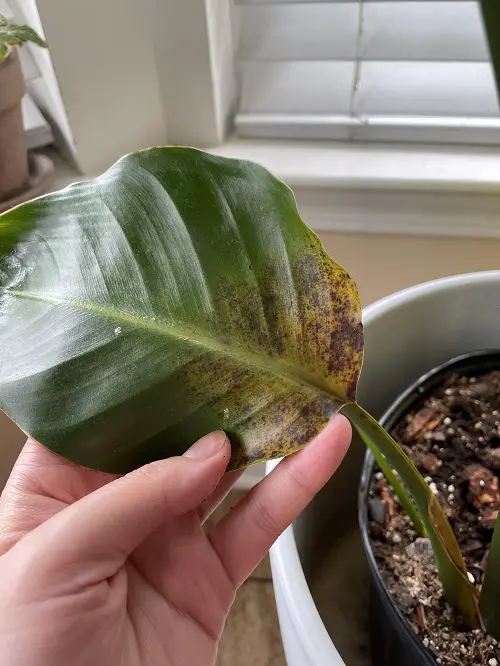
Yellowing leaves in a bird of paradise plant can indicate low humidity or insufficient watering and sunlight. It can also be because of nutrient deficiencies, particularly in magnesium, iron, zinc, and nitrogen.
Solution: Bird of Paradise plants require a minimum of 6 hours of direct sunlight to thrive. Water the plant always when the topsoil feels a little dry to the touch, and use a balanced liquid fertlizer once in 6-8 weeks.
7. Top Heaviness
As the bird of paradise plant grows, it can reach a considerable height and may appear top-heavy and prone to becoming lopsided. This imbalance occurs when the stems struggle to support the weight of the plant.
Solution: Occasionally rotate the plant. By rotating the plant, you ensure that all sides receive equal exposure to sunlight. Pruning plays a crucial role – focus on snipping old leaves and stems, particularly at the beginning of spring.
8. Legginess / Growing Too Tall
The bird of paradise plant grows at a good pace. If its stems are weak and thin, they can develop a leggy appearance. Improper lighting and high nitrogen soils can contribute to the bird of paradise plant becoming excessively tall.
Solution: To correct legginess in the bird of paradise plant, it is recommended that nitrogen fertilizer be reduced. Ensuring the plant receives adequate watering and sunlight to promote sturdy growth.
9. Failing to Flower
A young plant typically takes three to five years to mature and produce flowers. Insufficient light can also cause a bird of paradise to fail to bloom.
Solution: If you desire a quicker bloom, purchasing more mature bird of paradise plants is an option. Also, make sure the plant gets a minimum of 5-6 hours of indirect sunlight every day.

